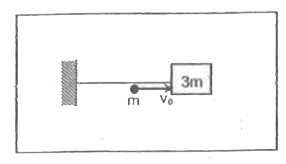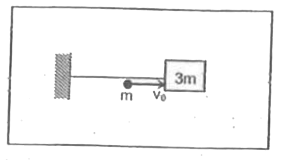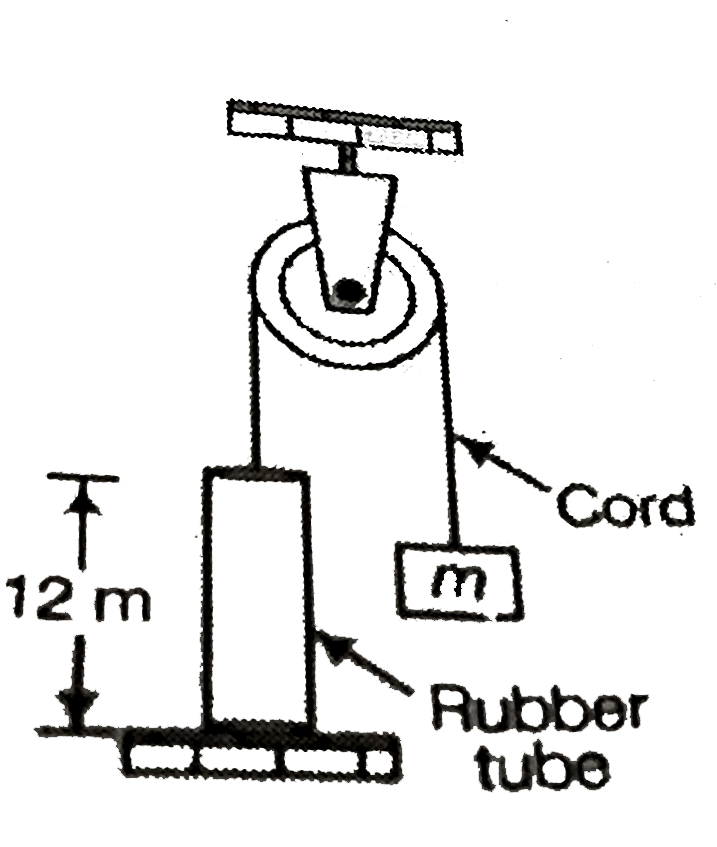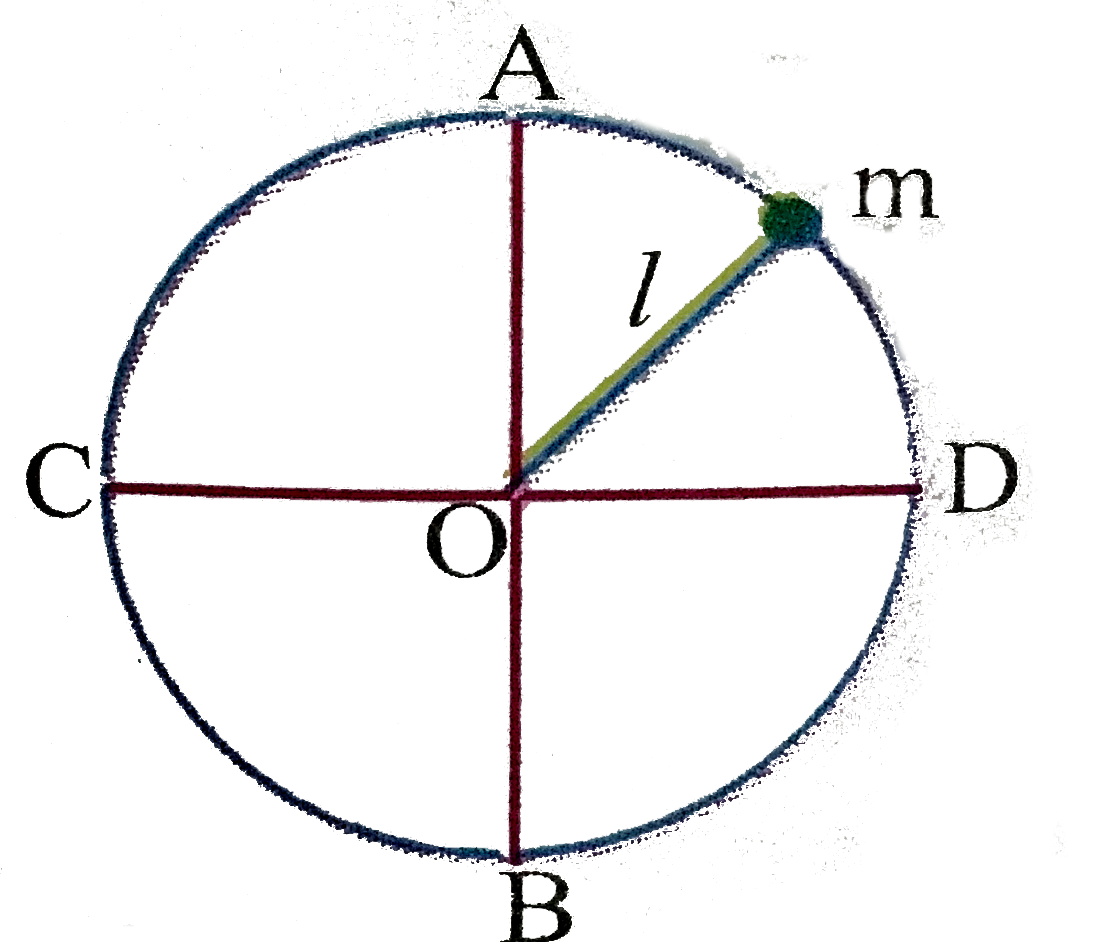A massless elastic cord (that obeys Hooke's law) break if the tension in the cord exceeds Tmax. One end of the cord is attached to a fixed point, the other is attached to an object of mass 3m as shown in the figure. If a second, smaller object ofmass m moving at an initial speed v0 strikes the larger mass and the two stick together the cord will stretch and break but the final kinetic energy of the two masses will be zero. If instead the two collide with a perfectly elastic one dimensional collision the cord will still break and the larger mass will move off with a final speed of vf. All motion occurs on a horizontal frictionless surface. (Assume that Hooke's law is obeyed throughout untill the cord breaks)

Find vfv0
1√12
1√2
1√6
1√3
The correct Answer is:C
Topper's Solved these Questions
- COLLISION BOOK - FIITJEECHAPTER - COLLISION EXERCISE - (COMPREHENSIONS - II)
3 Videos
- COLLISION BOOK - FIITJEECHAPTER - COLLISION EXERCISE - (COMPREHENSIONS - III)
3 Videos
- COLLISION BOOK - FIITJEECHAPTER - COLLISION EXERCISE - ASSIGNMENT PROBLEMS (OBJECTIVE) Level - II
20 Videos
- AC CIRCUITSBOOK - FIITJEECHAPTER - AC CIRCUITSEXERCISE - ASSERTION REASONING TYPE
1 Videos
- CURRENT ELECTRICITYBOOK - FIITJEECHAPTER - CURRENT ELECTRICITYEXERCISE - Comprehension -4
3 Videos
Similar Questions
An object of mass m1 moving with speed v collides with another object of mass m2 at rest and stick to it. Find the impulse imparted to the second object.
View SolutionAn object of mass m1 moving with speed v collides with another object of mass m2 at rest and stick to it. Find the impulse imparted to the second object.
View Solution
Knowledge Check
A massless elastic cord (that obeys Hooke's law) break if the tension in the cord exceeds Tmax. One end of the cord is attached to a fixed point, the other is attached to an object of mass 3m as shown in the figure. If a second, smaller object ofmass m moving at an initial speed v0 strikes the larger mass and the two stick together the cord will stretch and break but the final kinetic energy of the two masses will be zero. If instead the two collide with a perfectly elastic one dimensional collision the cord will still break and the larger mass will move off with a final speed of vf. All motion occurs on a horizontal frictionless surface. (Assume that Hooke's law is obeyed throughout untill the cord breaks)

Find the ratio of the total kinetic energy of the system of two masses after the perfectly elastic collision and the cord has broken to the initial knetic energy of the smaller mass prior to the collisionA1/4B1/3C1/2D3/4A heavy block of mass m is supported by a cord C attached to the ceiling, and another cord D is attached to the bottom of the block. If a sudden jerk is given to D, then
 Acord C breaksBcord D breaksCcord C and D both BreakDNone of the cords breaks
Acord C breaksBcord D breaksCcord C and D both BreakDNone of the cords breaksA long rubber tube having mass 0.9 kg is fastened to a fixed support and the free end of the tube is attached to a cord which passes over a pulley and supports an object, with a mass of 5 kg as shown in figure. If the tube is struck by a transverse blow at one end, find the time required for the pulse to reach the other end.
 A5 sB0.47 sC4.7 sD3.2 s
A5 sB0.47 sC4.7 sD3.2 s
A heavy block of mass m is supported by a cord C attached to the ceiling, and another cord D is attached to the bottom of the block. If a sudden jerk is given to D, then

View SolutionName the point of attachment of the cord to the wall of the uterus.
View SolutionA mass M, attached to a spring, oscillates with a period of 2s. If the mass is increased by 4kg, the time period increases by one second. Assuming that Hooke's law is obeyed, find the initial mass M.
View SolutionA mass M, attached to a spring, oscillates with a period of 2s. If the mass is increased by 4kg, the time period increases by one second. Assuming that Hooke's law is obeyed, find the initial mass M.
View SolutionA small sphere of mass 'm' is attached to a cord and rotates in a vertical plane about a point O. If the average speed of the sphere is increased, the cord is most likely to break at the orientation when the mass is at :
 .
.
View Solution
